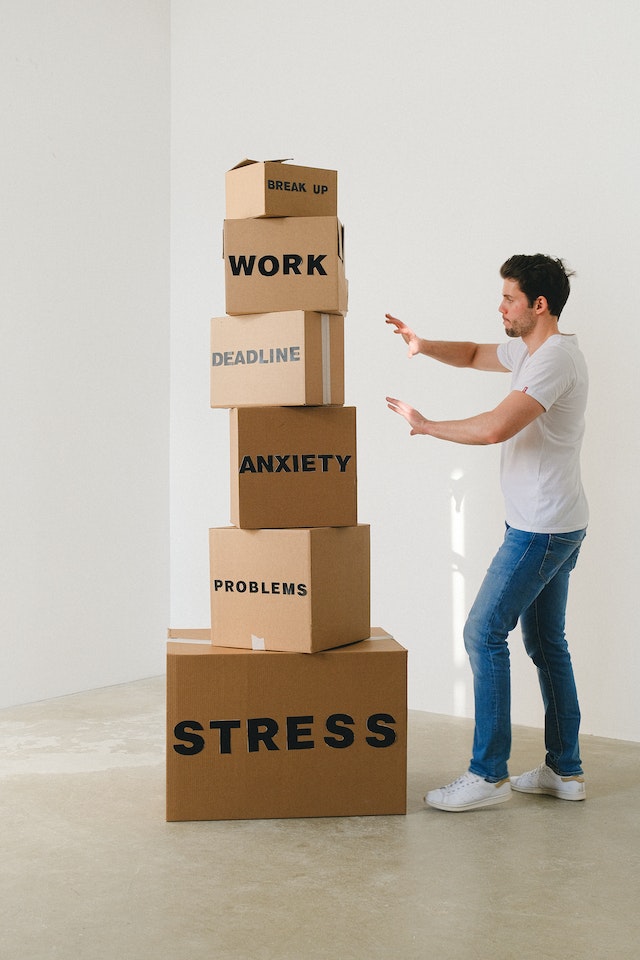How to Organize Yourself In One Week: 5 Practical Ways
Imagine a life void of the overwhelming feeling from your to-do list. Or a life in that you don’t have to struggle so hard to manage your time.
Unfortunately, that’s the cause of worry and pain for 80% of people in the world or those you know.
But the good news is that you can transform your life in as little as one week with just a few simple strategies and a little effort.
So, in this blog post, you will learn practical tips and techniques to help you take control of your time, tasks, and priorities. And ultimately, you can become more efficient, productive, and balanced.
In other words, you’ll discover the tools to help you achieve your dreams and live your best life. From setting SMART goals to decluttering your space and practicing self-care.
Read on!
Organizing as a skill
Indeed, some skills are life skills for people to live their best lives and achieve their goals. Interestingly organizational skills are one of them, which is the core of this blog post.
What do organizing skills entail?
Well, organizing oneself is a skill that’s essential for achieving success and maintaining a healthy work-life balance. It’s the process of arranging and prioritizing tasks and activities systematically.
Being organized helps to reduce stress, increase productivity, and improve time management. That said, below are some practical tips on how to organize yourself effectively:
5 Practical Ways To Organize Yourself In A Week
1. Make a to-do list
Indeed, you may somewhat feel a bit overwhelmed trying to get things for peak productivity, especially for the coming week. But using a to-do list can come very handy.
Of course, it’s a simple yet effective tool to help you keep track of all things you need to do. All you need to do is jot down everything you need to get done, no matter how small or big the task is. The important thing is putting the most important things at the top of your list.
That way, you’ll be able to tackle the most critical tasks and ensure that you don’t forget anything important. Interestingly, to do that without much hassle, you can use a planner or an app like Google Tasks or Todoist. These tools allow you to categorize tasks, set reminders, and track progress.
2. Set goals
Setting goals can be a real game changer for you, whether you’re trying to organize yourself in just one week or a perpetual habit. That’s because goals give you direction and get you focused on what you want to achieve.
But, you first need to set your short-term and long-term goals. By that, you break big goals into smaller, more manageable tasks.
And the outcome of that is that it helps you stay motivated and track your progress. But to make sure your goals are effective, try using the SMART framework. That simply means your goals should be Specific, Measurable, Attainable, Relevant, and Time-bound.
For example, suppose your goal is to improve your physical fitness. In that case, a SMART goal could be “I will jog for 20 minutes every day this week to improve my cardiovascular health.
3. Rank your tasks
One practical way to organize yourself is by prioritizing your tasks. You can start by creating a list of everything you need to do and group them in order of importance and urgency. But to do that so well, you must figure out which tasks you should do right away and which can wait.
Of course, you can delegate tasks if there are those someone else can do. Also, don’t forget to break down a task into smaller pieces that seem too big.
Finally, make a schedule or a to-do list that shows your priorities and review it often. Then, you’ll be amazed at how prioritizing your tasks can help you feel more in control, get more done, and move closer to your goals.
4. Create a schedule
Scheduling is a great way to organize yourself. But first, you must decide which tasks are important and when to do them. Of course, you can use a planner or digital calendar to create the schedule.
And once you’ve done that, stick to it. By the way, don’t forget to incorporate breaks into your schedule to avoid burnout.
For example, if you have schoolwork, schedule time for studying, assignments, classes, and breaks for exercise, friends, or TV. Following a schedule like this can help you stay productive and have time for relaxation.
4. Declutter your workspace
Imagine a messy workspace. You agree that trying to work in such an environment can make you less productive and stressed. It’s natural and psychological. But to fix that, you need to take some time to tidy up and make your workspace more comfortable and organized.
Of course, you can start by getting rid of things you don’t need. For example, you can throw away old papers or empty cups. Once you’ve cleared the clutter, arrange your things and ensure everything has a proper place. That can help you feel more relaxed and focused when you work.
5. Organize Your Life into Categories
Many of us feel overwhelmed and disorganized because we have a lot going on. But to organize yourself, group your tasks and activities into essential categories. That will help you prioritize your time and ensure you don’t neglect anything important.
For instance, you could have categories like work, family, and hobbies. That way, you can focus on one category at a time, feeling less overwhelmed and more in control. Also, checking off tasks as you complete them is satisfying!
That said, here are some common categories you may want to consider:
1. Personal
Here, you include things you do for yourself outside of work or school. And they include your hobbies, exercising, and attending social events.
2. Work
In this category, you include tasks and activities related to your job or career, such as meetings, projects, and deadlines.
3. Finances
Tasks and activities such as budgeting, paying bills, and managing investments are captured in this category. Primarily, they’re related to your financial well-being.
4. Health
Unlike others, this category includes tasks and activities related to your physical and mental health. A typical example is doctor’s appointments, exercise, and meditation.
5. Relationships
This category seems so related to our social and emotional needs, including tasks and activities related to his family and friends. Examples are spending time with loved ones, attending events, and staying in touch.
6. Personal Development
This category includes tasks and activities related to your personal growth and development. They include reading, taking courses, and learning new skills or hobbies.
How to Organize Your Life on Paper
Sometimes you may indeed feel like your life is a chaotic mess. Particularly with many tasks, appointments, and responsibilities to attend to. Listen, you’re not alone. The good thing is that you can take control of your life by organizing it on paper.
Sound great, right?
Yes, it does. Starting might take some effort, but once you create a system, you’ll be amazed at how much easier and less stressful life can be. You can steadily achieve progress toward your goals and feel more in control of your life.
Easy Tips to help you get started:
- Choose a planner or notebook that suits your needs
- Set SMART goals and write them down
- Create a list of tasks to be done and assign priority levels to each one.
- Schedule your time using your planner or calendar
- Regularly check your advancement and change your strategies as necessary.
Final Thoughts
Organizational skills are essential for achieving success and maintaining a healthy work-life balance. Of course, being organized reduces stress, increases productivity, and improves time management.
And as you’ve learned already, there are practical tips to help you organize yourself effectively in just one week and beyond. They include making a to-do list, setting goals, prioritizing tasks, creating a schedule, decluttering your workspace, and organizing your life into categories.
What are you waiting for to start living your best life and achieving your goals as you apply these tips?






![How to Get Rid of Smartphone Addiction [Six Practical Ways for ALL]](https://greatcrackers.com/wp-content/uploads/2022/04/Smartphone-addiction.jpg)

